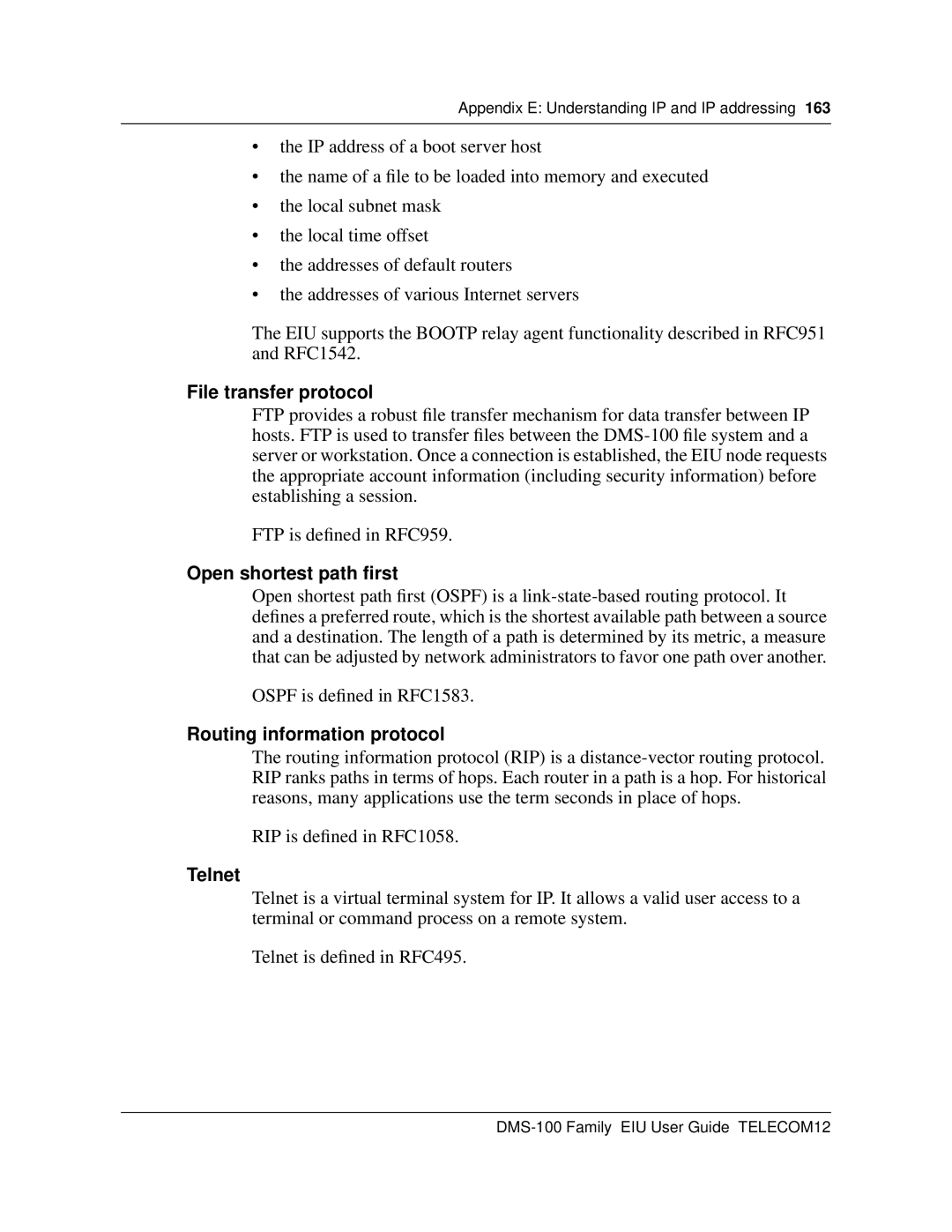
Appendix E: Understanding IP and IP addressing 163
•the IP address of a boot server host
•the name of a file to be loaded into memory and executed
•the local subnet mask
•the local time offset
•the addresses of default routers
•the addresses of various Internet servers
The EIU supports the BOOTP relay agent functionality described in RFC951 and RFC1542.
File transfer protocol
FTP provides a robust file transfer mechanism for data transfer between IP hosts. FTP is used to transfer files between the
FTP is defined in RFC959.
Open shortest path first
Open shortest path first (OSPF) is a
OSPF is defined in RFC1583.
Routing information protocol
The routing information protocol (RIP) is a
RIP is defined in RFC1058.
Telnet
Telnet is a virtual terminal system for IP. It allows a valid user access to a terminal or command process on a remote system.
Telnet is defined in RFC495.
